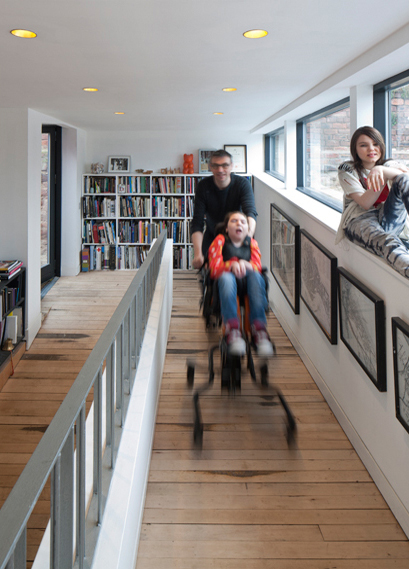Designing spaces which are barrier-free and accessible to everyone, through engaging people in the design process. This should be prioritised because it improves everyone’s experience of the built environment; when people feel included both in the process and in the built result, their involvement ensures meaningful and joyful use.
Children’s different ways of moving through and using spaces shows us that buildings can be thought of differently, and barrier-free design (rather than being seen as an add on) can be at the core of our architecture. This will change the rhythm of use, and the spaces occupied.
Imagine that most places you went to worked against you moving easily around them, and that every space had been designed with a mobile upright person in mind?
Our own house has been designed by the whole family to offer a little girl a supportive environment, not only for her, but for her family and friends too. Realising that an inclusive, barrier-free house is not just about being able to get from one floor to the other, and considering movement around a house in a whole new way offers a richness of experience of spaces that is beneficial to everyone.





